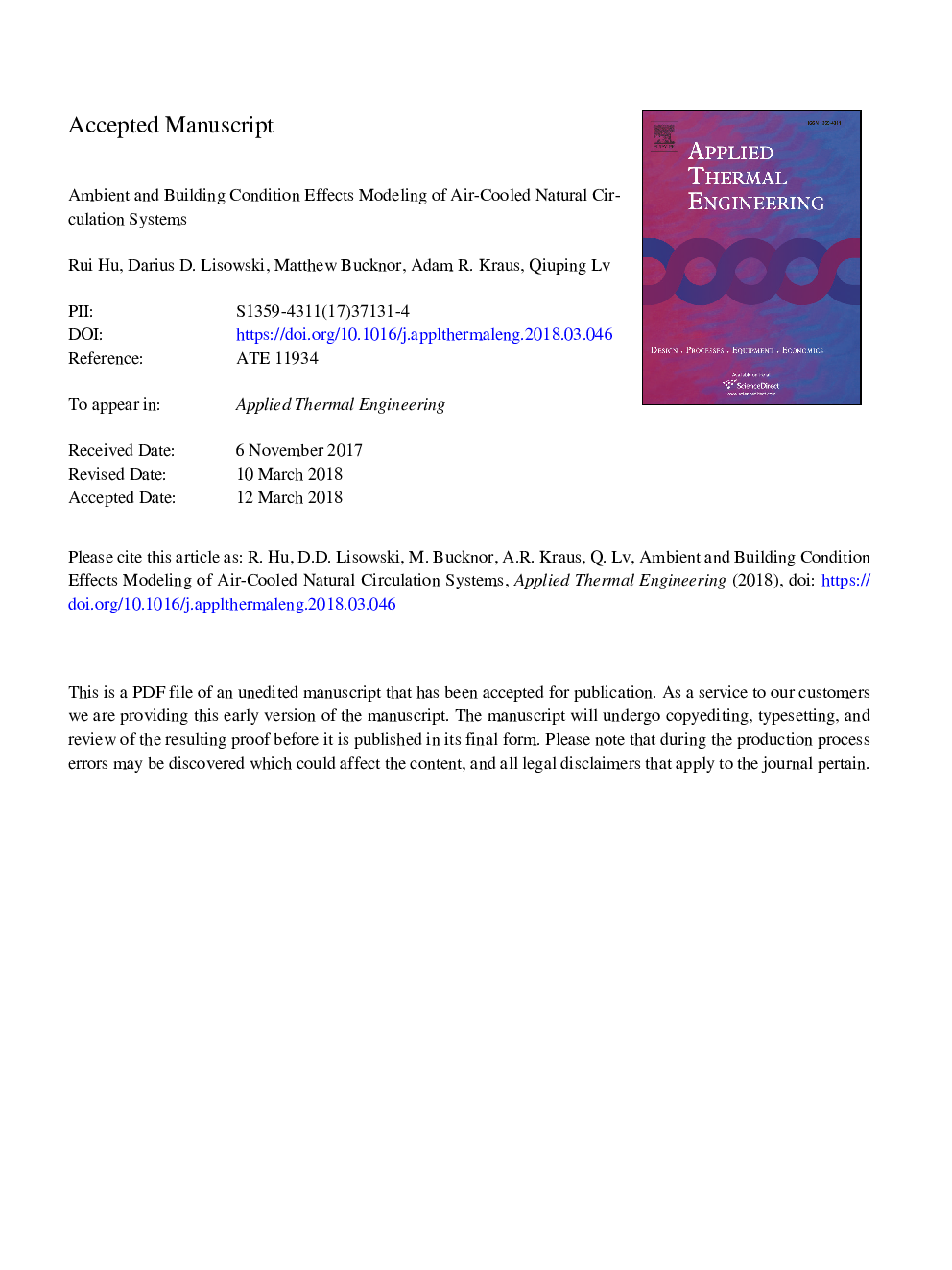| Article ID | Journal | Published Year | Pages | File Type |
|---|---|---|---|---|
| 7045369 | Applied Thermal Engineering | 2018 | 19 Pages |
Abstract
Throughout the testing program at Natural convection Shutdown heat removal Test Facility (NSTF), strong influences of ambient conditions were observed in the experimental data when baseline tests were repeated under identical test procedures. Significant analysis efforts were conducted to gain understanding of these influences, and quantify the system response of the test facility. An empirical model was developed based on theoretical considerations and using experimental data to correlate zero-power system flow rates with ambient meteorological conditions, including wind and temperatures. Coefficients in the model were determined based on best fitting of the experimental data set. The predictive capability of the empirical model was demonstrated by applying it to new sets of experimental data. After implementing the empirical model in both system-level thermal fluids and computational fluid dynamics modeling of the facility, simulations from both approaches resulted in accurate predictions in system natural circulation flow rates.
Related Topics
Physical Sciences and Engineering
Chemical Engineering
Fluid Flow and Transfer Processes
Authors
Rui Hu, Darius D. Lisowski, Matthew D. Bucknor, Adam R. Kraus, Qiuping Lv,
